The SV 973A is a Class 2 Sound Level Meter engineered to IEC 61672-1:2013 standards, ensuring precise, professional noise measurements across diverse workplaces. This advanced instrument features a state-of-the-art MEMS microphone with a lifetime warranty, delivering robust durability and reliable performance. With a frequency range up to 10 kHz and an operating temperature from -10°C to 50°C, the SV 973A exceeds standard requirements for Class 2 precision. Its wide measurement span from 25 dB to 129 dB and Peak up to 141 dB enables accurate assessments of both industrial and environmental noise, including in low background conditions. Optional 1/1 and 1/3 octave band filters enable detailed frequency analysis, while the dual MEMS microphone construction ensures portability and versatility for on-the-go professionals. The SV 973A combines accuracy, durability, and mobility, making it the trusted solution for comprehensive sound level monitoring.

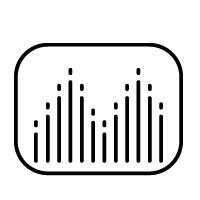

A Class 2 Sound Level Meter is a professional noise measurement instrument built to IEC 61672-1:2013 standards, delivering precision and accuracy in a defined frequency range of 20 Hz to 8 kHz and a temperature range from 0°C to 40°C. While sharing many design elements with Class 1 meters, Class 2 meters differ in acceptance limits and are ideal for general workplace, environmental, and industrial noise monitoring. Each meter integrates a microphone, preamplifier, and signal processor, ensuring consistent, reliable results displayed on an integrated screen for every professional application.
Noise Frequency Analysis
Octave band filters and WAV recording empower advanced noise diagnostics.
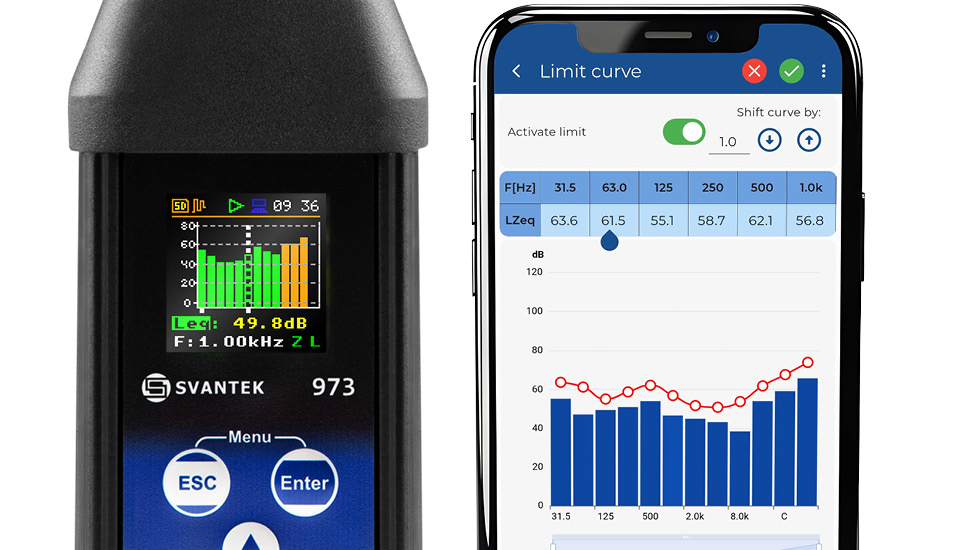
Class 2 Sound Level Meter Functionality
Digital conversion and data logging enable detailed noise analysis.
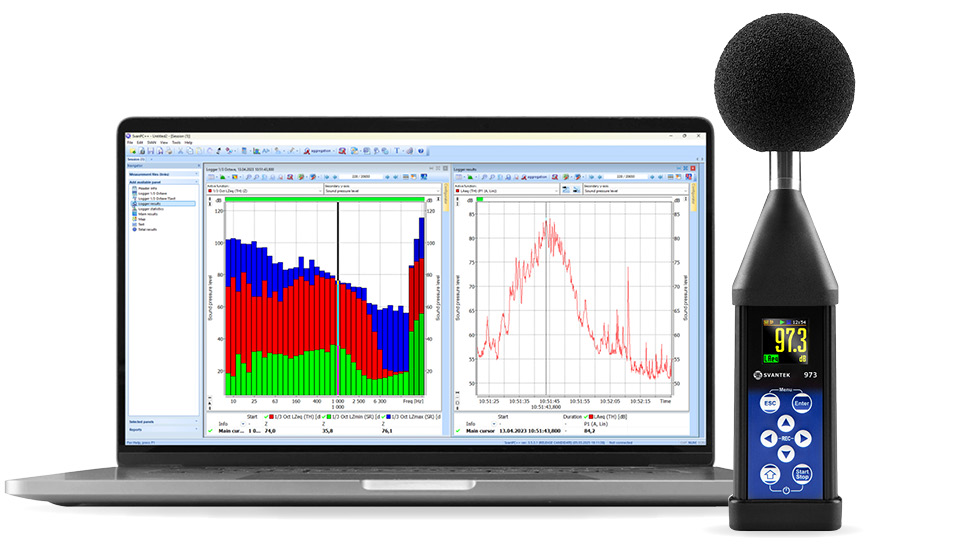
Class 2 Sound Level Meter APP
Mobile integration enhances measurement control and data access.
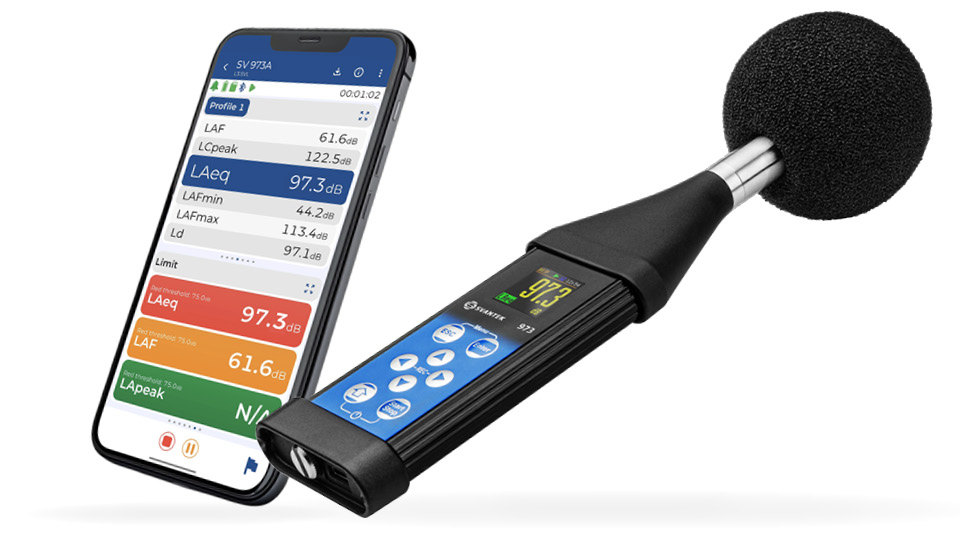
Class 2 Sound Level Meter Accuracy
Precision and versatility define SV 973A performance.
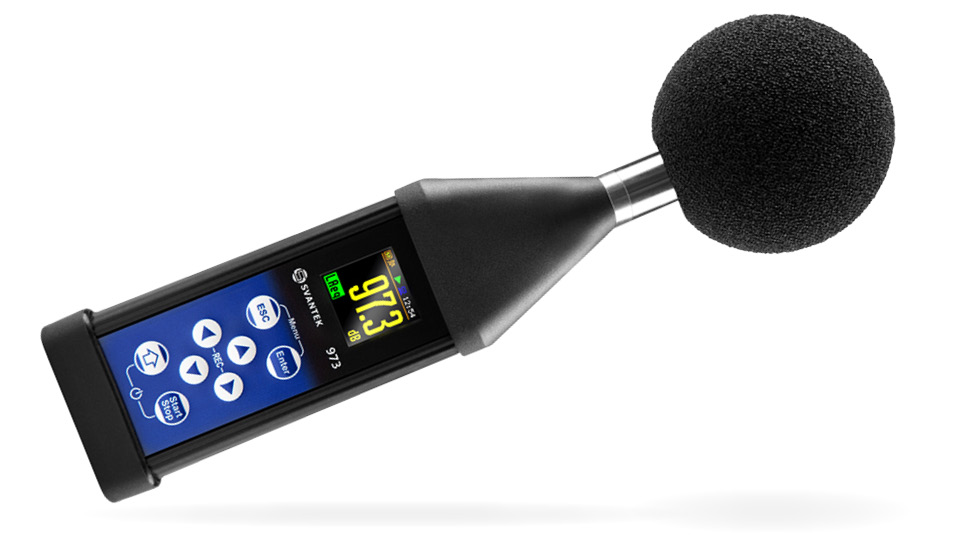
Class 2 vs. Class 1 Sound Meters
Accuracy and frequency range distinguish Class 1 from Class 2 instruments.
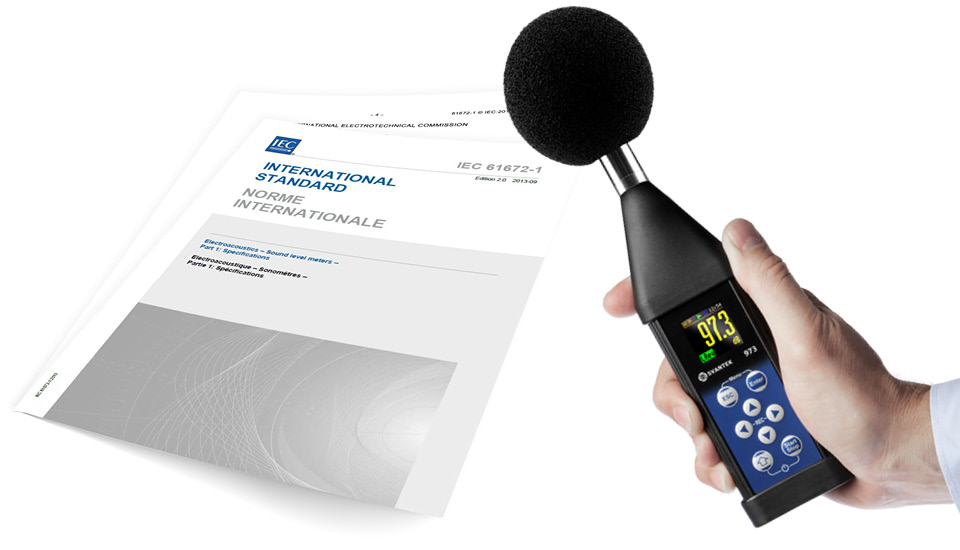
Class 2 Sound Level Meter Microphone
MEMS technology ensures durability, efficiency, and accuracy.
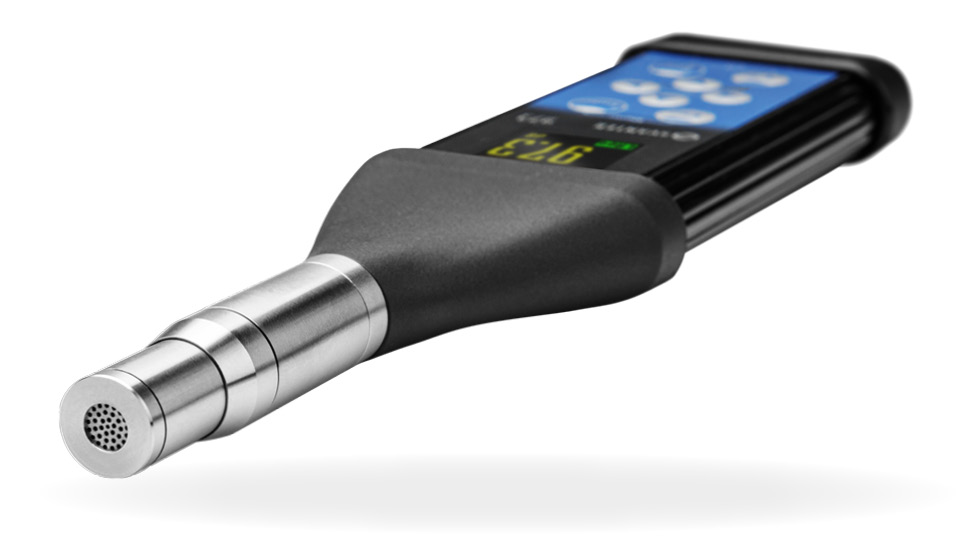
Class 2 Sound Level Meter Calibration
Automatic field calibration ensures consistent measurement accuracy.
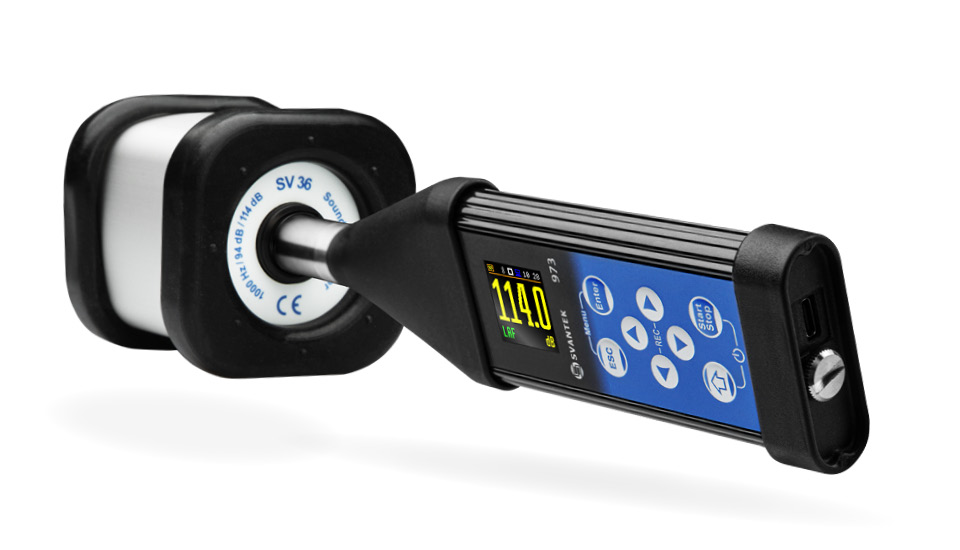
Reverberation Time RT60
Class 2 accuracy supports effective classroom acoustic assessments.
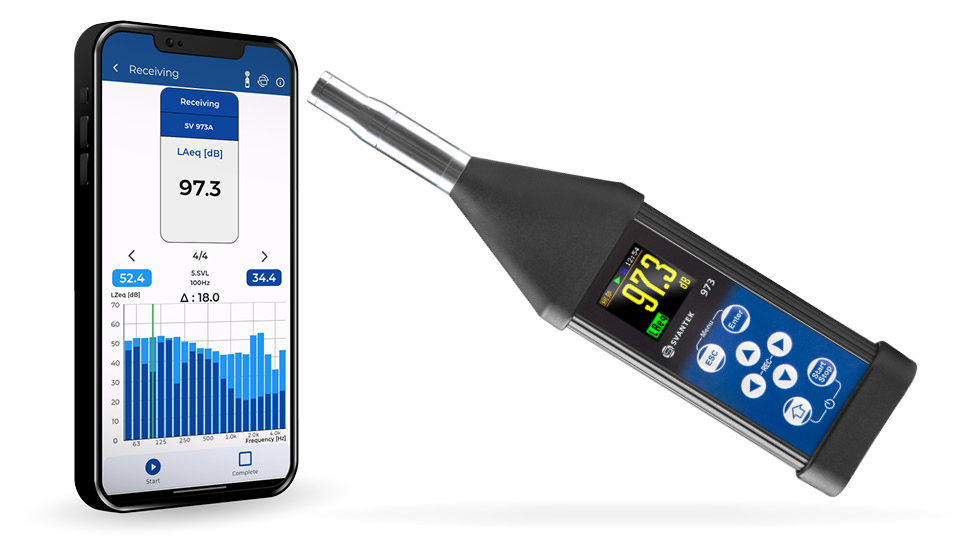

Octave band filters and WAV recording empower advanced noise diagnostics.
Read more

Digital conversion and data logging enable detailed noise analysis.
Read more

Mobile integration enhances measurement control and data access.
Read more

Precision and versatility define SV 973A performance.
Read more

Accuracy and frequency range distinguish Class 1 from Class 2 instruments.
Read more

MEMS technology ensures durability, efficiency, and accuracy.
Read more

Automatic field calibration ensures consistent measurement accuracy.
Read more

Class 2 accuracy supports effective classroom acoustic assessments.
Read more
Discover how the SV 973A sets a new standard with real-time frequency analysis, triggered audio recording, time-history logging, and advanced RT60 and STIPA measurements. Download the full product catalogue to see how the dedicated mobile app for iOS and Android makes noise-at-work assessments faster, easier, and more accurate.
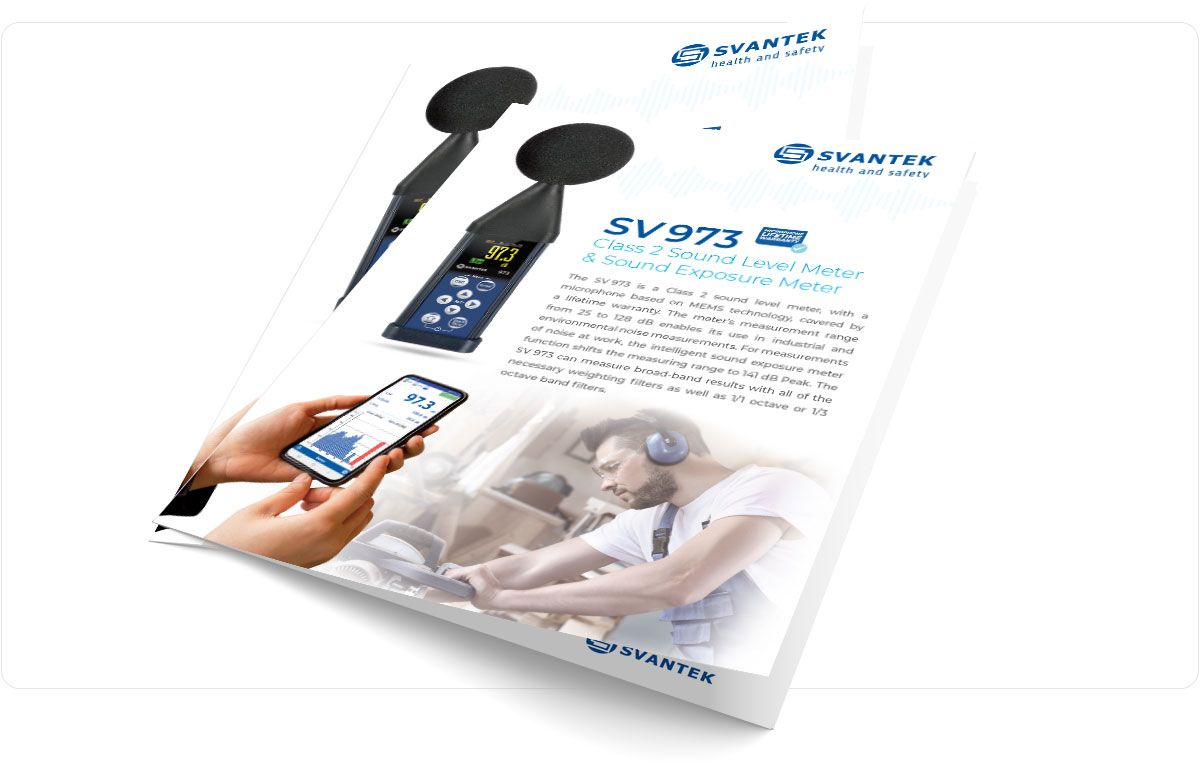
Occupational Noise Measurements
Compliance with NIOSH SLM, OSHA, MSHA, ACGIH, and ISO standards ensures reliable workplace assessments.
The SV 973A delivers accurate noise exposure measurements up to 141 dB, meeting strict international health and safety guidelines for occupational environments. A robust MEMS microphone and user-friendly software make the SV 973A ideal for professionals, providing durable performance and efficient data management in demanding workplace conditions.
Read more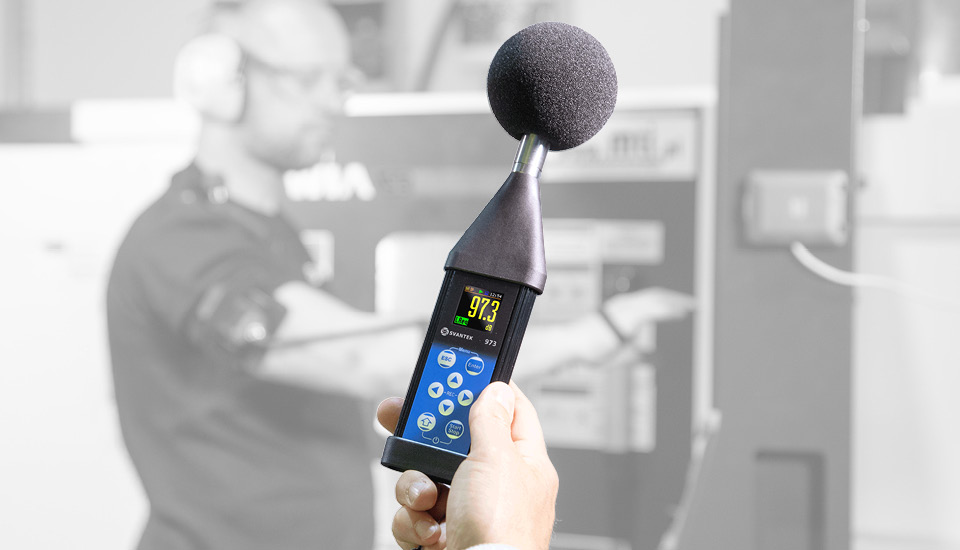
Class 2 Sound Measurements
Accurate measurements up to 10 kHz support diverse monitoring needs.
The SV 973A measures sound pressure levels in full compliance with IEC 61672-1:2013, making it suitable for workplaces, schools, construction sites, and environmental monitoring. Flexible A, C, and Z frequency weightings and time-averaged level analysis ensure precise, reliable results for any professional Class 2 sound measurement application.
Read more
STIPA in accordance with IEC 60268
Class 2 accuracy ensures reliable speech transmission measurements in public address systems.
The SV 973A performs STIPA measurements compliant with IEC 60268-16, enabling precise assessment of speech intelligibility in PA and VA systems found in airports, stations, and public venues. The Building Acoustics PRO app streamlines the organization, analysis, and interpretation of STIPA data, ensuring that voice announcements remain clear and effective in complex acoustic environments.
Read more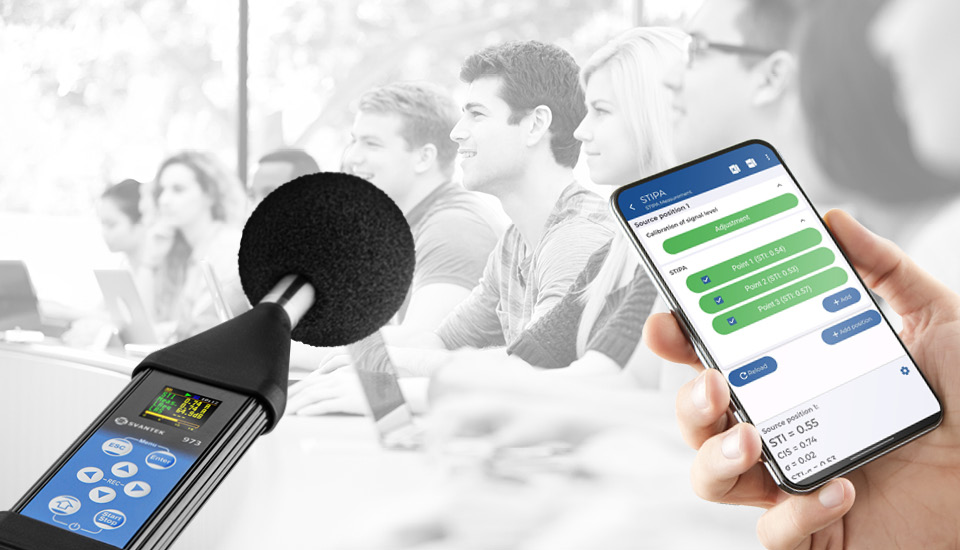

Compliance with NIOSH SLM, OSHA, MSHA, ACGIH, and ISO standards ensures reliable workplace assessments.
Read more

Accurate measurements up to 10 kHz support diverse monitoring needs.
Read more

Class 2 accuracy ensures reliable speech transmission measurements in public address systems.
Read more
See why the SV 973A is the top choice for Class 2 sound measurements.
Watch the video to discover how its MEMS microphone, wide measurement range, and advanced features set a new standard for accuracy and reliability.
Explore the professional features of the SV 973A.
Watch the video to learn about real-time frequency analysis, mobile app integration, and robust design that make the SV 973A ideal for demanding noise monitoring applications.
Class 2 Sound Level Meter SV 973A
Applications
Hardware Features
Sound measurements features
Please select the file and language version